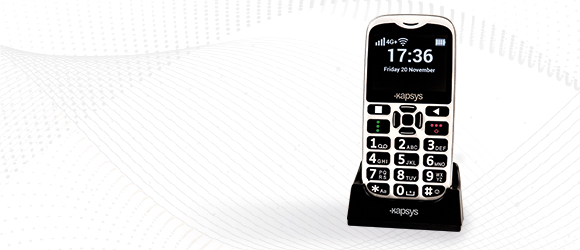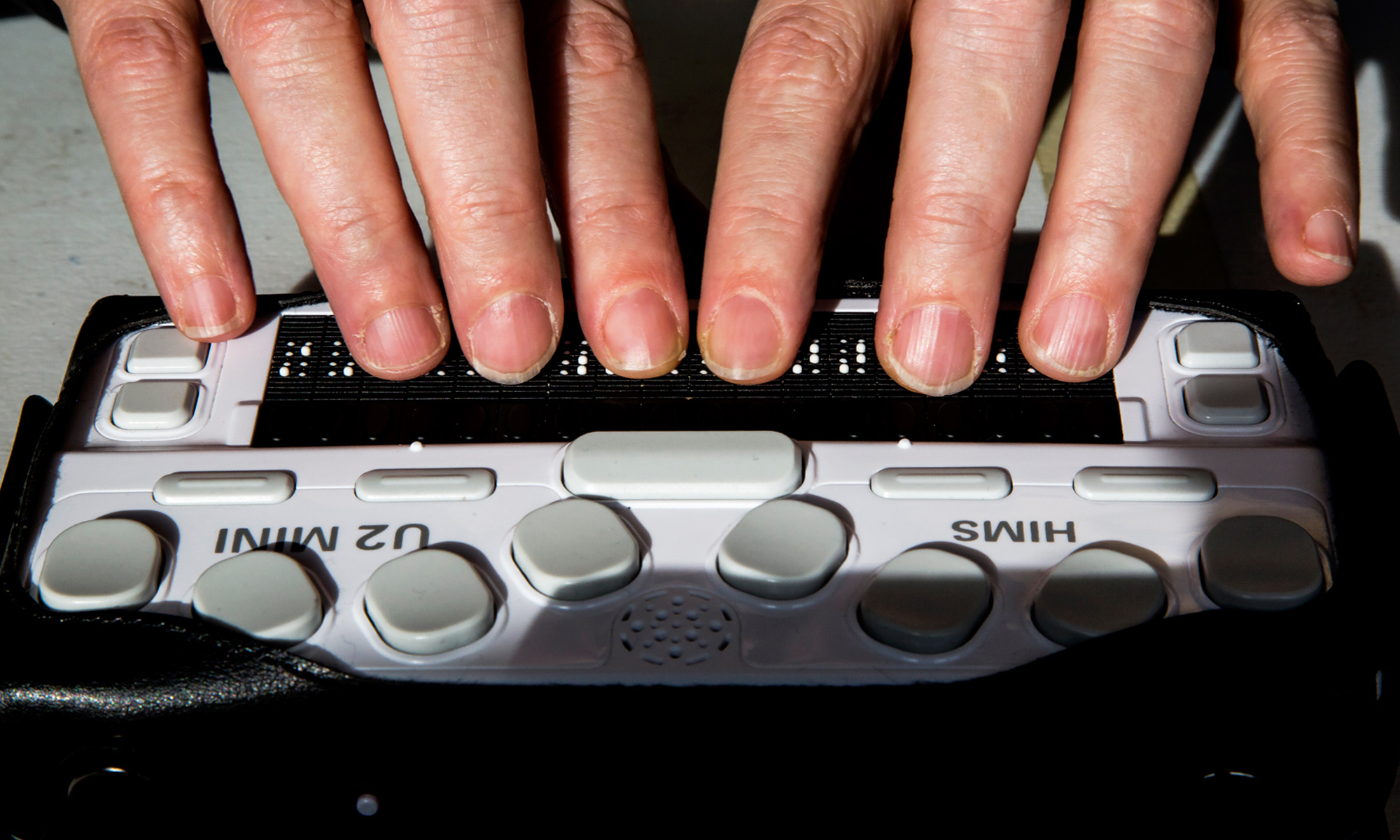Mobility Aids for Visually Impaired Users: Improving Autonomy
Mobility Aids for Visually Impaired Users: Improving Autonomy
Blog Article
Enhancing Lives With Advanced Assistive Tools for the Blind
The assimilation of sophisticated assistive tools for the blind is transforming exactly how individuals experience their environments and connect with their areas. Developments such as enhanced reality smart glasses and advanced electronic travel help not only help with navigating yet also enhance general lifestyle. These technologies promote a feeling of freedom and self-efficacy among users, allowing them to embark on everyday jobs with newly found confidence. The implications of these improvements expand beyond simple performance; they challenge social perceptions of handicap and independence. What does this evolution suggest for the future of assistive technology and its duty in encouraging people?
Overview of Assistive Tools
Assistive devices for the blind include a varied variety of devices and innovations created to enhance freedom and improve the lifestyle for people with visual impairments. These devices deal with different needs, from navigation and wheelchair to communication and day-to-day job monitoring.
One of the key categories of assistive devices includes mobility help, such as white walking canes and overview canines, which aid customers navigate their environments safely. Digital traveling help, outfitted with sensors and audio feedback, likewise play a significant duty in wheelchair improvement.
Furthermore, gadgets that help with everyday living tasks, such as flexible kitchen area tools, Braille tags, and speaking watches, empower people to perform tasks individually. Interaction aids, consisting of display viewers and Braille display screens, help with accessibility to details and allow individuals to involve efficiently with the electronic globe.
In addition, low-tech remedies like multiplying glasses and large-print materials continue to be essential for several individuals. Collectively, these assistive tools serve not only as practical devices yet additionally as important enablers of autonomy, fostering greater involvement in a world that frequently prioritizes sighted experiences. Their combination right into day-to-day live is important for advertising inclusivity and boosting general well-being for those with visual impairments.
Cutting-edge Technologies in Use
Innovation in technology has actually considerably changed the landscape of tools offered for individuals with visual problems. Among the most noteworthy developments are clever glasses incorporated with increased truth, which give real-time navigating help and item recognition. These devices take advantage of progressed video cameras and man-made intelligence to deliver auditory hints, boosting the individual's spatial awareness and autonomy.
Additionally, mobile applications have actually emerged as powerful resources, allowing users to recognize money, read text out loud, and browse strange atmospheres via verbal directions. Tools such as Braille screens and refreshable Braille devices proceed to evolve, using smooth connectivity with computer systems and smart devices, consequently boosting interaction and accessibility to information.
Wearable modern technology, consisting of smartwatches equipped with voice-activated functions, further equips customers by helping with quick accessibility to notices and notifies without requiring aesthetic involvement. Tactile maps and 3D printing are likewise acquiring traction, using tangible depictions of spaces that help in alignment and wheelchair training.
Jointly, these cutting-edge modern technologies not just enhance the every day lives of visually impaired people but additionally foster greater self-reliance, inclusivity, and interaction with the broader neighborhood, consequently reshaping perceptions of ease of access. (Smart glasses for the visually impaired)
Individual Stories of Empowerment
Empowerment often arises from personal experiences that highlight the transformative influence of modern technology on people with visual disabilities. Take, for circumstances, the story of Sarah, a young musician that regained her interest for paint through using a smart walking cane furnished with barrier discovery. This device not just facilitated her wheelchair yet instilled a newfound self-confidence, enabling her to browse public areas independently and seek her innovative endeavors.

These narratives underscore the extensive effects that advanced assistive devices can have on everyday life. By allowing individuals to get over barriers, see page modern technology promotes a sense of freedom and self-worth. Such empowerment stories act as a testament to the possibility of innovation, showing exactly how the right tools can significantly boost lifestyle and open doors to brand-new opportunities for those with visual impairments.
Benefits of Advanced Solutions
How can progressed options basically boost the lives of individuals with aesthetic disabilities? The combination of cutting-edge modern technology into assistive devices considerably transforms day-to-day experiences for those influenced by vision loss. These sophisticated remedies use extraordinary freedom, enabling individuals to navigate their environments with confidence. Devices such as smart walking sticks outfitted with sensors, navigation applications, and wearable technology are created to offer real-time feedback, boosting spatial understanding and lowering the threats linked with mobility.
Furthermore, advanced assistive technologies cultivate social inclusion by assisting in interaction and communication. Voice-activated tools and apps permit people to access info and engage with their surroundings individually, breaking obstacles that formerly hindered their participation in academic, expert, and social settings.
In enhancement, the modification and adaptability of these services provide to the varied needs of individuals, therefore boosting their overall lifestyle. Boosted functionality, such as item recognition and text-to-speech capacities, encourages individuals with visual impairments to carry out jobs that they might have once discovered challenging. Ultimately, progressed assistive technologies not just improve freedom and security however likewise advertise dignity and self-worth, allowing individuals to lead fulfilling lives.
Future Fads in Assistive Tech
As modern technology remains to advance, the landscape of assistive devices for the blind is positioned for impressive developments that will even more enhance ease of access and self-reliance. Arising patterns in assistive modern technology show a shift towards enhanced integration of man-made intelligence (AI) and artificial intelligence, allowing devices to adjust to individual user needs in real-time. These advancements are expected to promote even more instinctive navigation systems that can identify obstacles and give audio feedback, substantially improving outdoor flexibility.
In addition, the advancement of wearable technology, such as clever glasses geared up with enhanced fact, will certainly permit individuals to receive contextual info concerning their surroundings, therefore improving their spatial recognition. Additionally, developments in haptic innovation promise to create responsive comments tools, allowing users to regard glasses for sale info via touch, enhancing understanding and interaction with their atmosphere.
Telecommunication advancements are likewise leading the way for remote aid solutions, where qualified professionals can give support via video phone calls, making sure assistance is easily obtainable. As these patterns unravel, the future of assistive tools for the blind will definitely foster greater autonomy, empowering individuals to navigate their globe with confidence and convenience.

Conclusion
The combination of sophisticated assistive devices for the blind stands for a significant improvement in fostering independence and boosting top quality of life. By making use of cutting-edge modern technologies, these devices empower individuals to navigate their settings with better confidence and autonomy. As the area remains to evolve, ongoing r & d will likely generate a lot more advanced services, further changing the lived experiences of individuals with aesthetic disabilities and advertising a better sense of incorporation within society.
The integration of sophisticated assistive devices for the blind is transforming how individuals experience their environments and interact with their areas. The assimilation of cutting-edge modern technology into assistive gadgets substantially changes everyday experiences for those influenced by vision loss.As technology proceeds to develop, the landscape of assistive devices for the blind is positioned for impressive innovations that will certainly better improve accessibility and self-reliance. Arising trends in assistive innovation show a change towards raised integration of artificial intelligence (AI) and equipment knowing, making it possible for Full Article gadgets to adjust to specific customer requires in real-time.The combination of advanced assistive devices for the blind stands for a substantial innovation in fostering self-reliance and boosting top quality of life.
Report this page